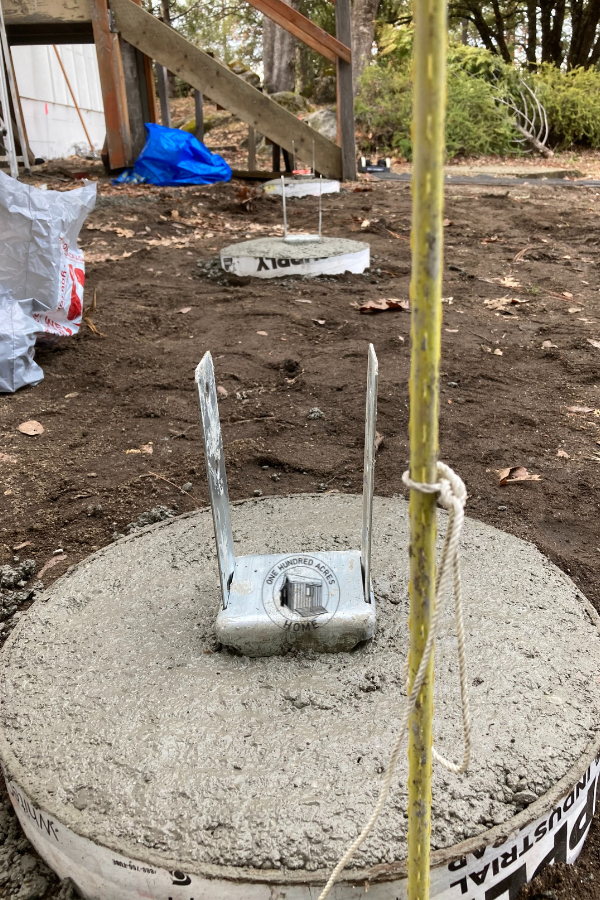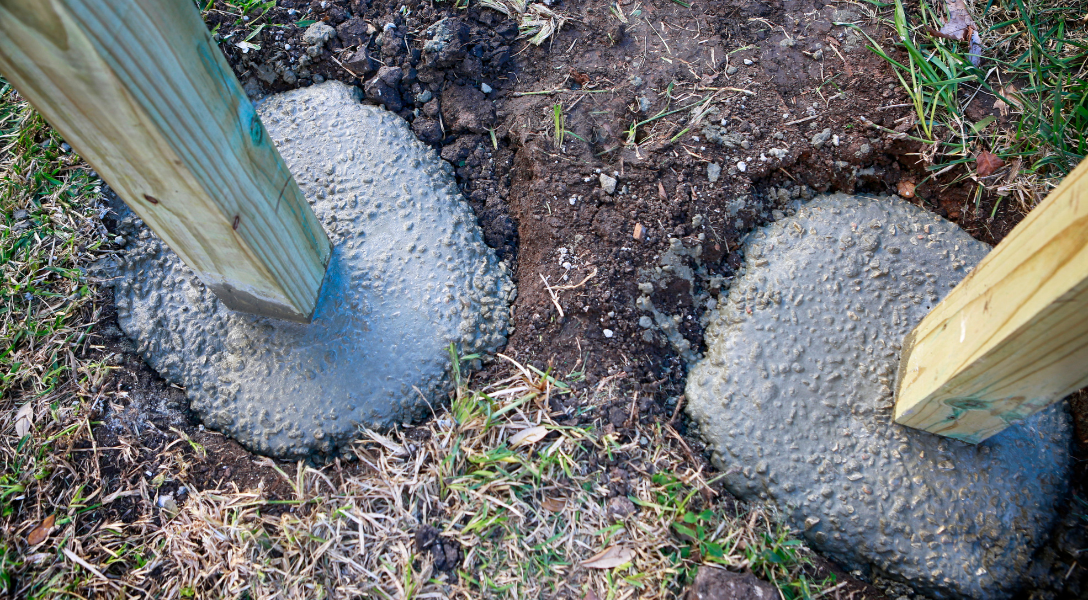Deck Footings 101: Navigating the Basics for a Steady and Durable Deck
Ensure Stability and Durability With Effectively Set Up Deck Footings
Deck grounds may not be the most glamorous facet of deck construction, but they play an important function in ensuring security and long life. Properly mounted grounds supply a solid foundation for your deck, protecting against common concerns like sagging, changing, and even collapse. Choosing the right type of footing and correctly installing it can be a complex process. In this discussion, we will discover the importance of proper deck footings, elements to think about during setup, various kinds of footings available, detailed setup overview, and maintenance pointers for guaranteeing long-lasting grounds. So, if you wish to make certain the stability and long life of your deck, maintain reading to discover the vital understandings to attain a long lasting and structurally sound outdoor room.

Significance of Proper Deck Footings
Why are effectively set up deck footings important for the stability and long life of your deck? Deck footings are the structure on which the deck rests, transferring the tons from the deck to the ground.
To start with, appropriately mounted deck grounds disperse the weight of the deck uniformly, preventing any uneven settling or sinking. This is particularly vital in locations with unstable soil, as it assists to minimize the risk of the deck collapsing or moving. Furthermore, well-installed grounds make sure that the deck stays level, protecting against any type of architectural damages that can occur when a deck becomes uneven.
Second of all, appropriately set up footings supply a solid anchor for the deck, stopping extreme activity and sway. This aids to maintain the architectural honesty of the deck, minimizing the threat of injuries or crashes. It also reduces the deterioration on the deck, enabling it to endure the components and routine usage for a longer duration of time.
Variables to Think About for Deck Ground Installment
When installing deck footings, there are several vital variables to take into consideration for proper installation. Different soil kinds have various load-bearing capacities, so it is essential to conduct a soil test to ensure the footings can support the weight of the deck and its owners. By taking right into account these aspects, you can make certain the correct setup of deck grounds and take pleasure in a steady and durable deck.
Kinds of Deck Grounds to Pick From
There are a number of various sorts of deck grounds readily available for you to pick from. Each type has its own advantages and drawbacks, so it's necessary to consider your details demands and the problems of your deck prior to deciding.
One common type of deck footing is the concrete footing. This involves excavating openings in the ground and putting concrete right into them to create a solid foundation. Concrete footings are sturdy and give superb security, making them ideal for decks in locations with challenging soil conditions or high wind tons.
One more option is the helical pier footing, which includes a steel shaft with helical plates that are screwed right into the ground. These grounds are fast to mount and can be made use of in numerous soil types, including sandy or clay soils. They are likewise flexible, enabling simple leveling of the deck.
Sonotube grounds are an additional popular choice. These footings are produced by placing a cardboard tube in an opening and filling it with concrete. Sonotube grounds are fairly easy to mount and offer adequate security for smaller decks or in locations with less requiring soil problems.

When picking the kind of deck ground, it's crucial to consider elements such as dirt problems, deck dimension and weight, neighborhood building regulations, and personal preferences. By selecting the suitable footing type, you can ensure the security and long life of your deck.
Step-by-Step Overview for Putting Up Deck Footings

Determine the place: Start by marking the precise position of each footing making use of stakes and string (Deck Footings). Consider any kind of local building ordinance or laws concerning trouble distances
Dig the holes: Utilize a post hole digger or an auger to dig the openings for the footings. The depth will rely on the frost line in your area and the sort of dirt. Generally, a depth of a minimum of 36 inches is recommended for stability.
Degree the openings: Guarantee that all-time lows of the openings are level (Deck Footings). This can be accomplished by utilizing a level or a straight board across the top of the holes
Add crushed find out here now rock: Area a layer of crushed rock at the end of each hole to enhance water drainage and protect against the footing from penetrating the dirt over time.
Place the ground kinds: Place the ground creates into the holes, guaranteeing they are focused and degree. Use stakes to protect them in area.
Mix and pour concrete: Follow the instructions on the concrete mix bag to prepare the concrete. Pour the concrete into the footing kinds, filling them totally.
Smooth the surface: Use a trowel to smooth the surface area of the concrete and eliminate any air pockets. Allow the concrete to treat according to the manufacturer's directions.
Maintenance Tips for Long-lasting Deck Grounds
Appropriate maintenance is vital for ensuring the longevity and stability of deck grounds. By routinely evaluating and maintaining your deck footings, you can stop damages and prospective safety hazards. One important element of maintenance is to regularly check for any indications of deterioration, such as splits or activity in the footings. It is vital to resolve them without delay to avoid more damages. if you see any problems.
Regular cleansing is likewise crucial for keeping deck grounds. Dust, debris, and greenery can collect around the footings, which can result in moisture accumulation and degeneration. Cleaning the footings on a regular basis, making use of a pressure or a brush washer, can aid avoid these problems and prolong the life-span of your deck.
Along with cleaning, it is vital to maintain the area around the footings free from any obstructions. Avoid piling things versus the grounds or enabling plants to expand as well near them. These blockages can trap dampness and cause the grounds to deteriorate over time.
Last but not least, routine resealing of the footings is advised to protect them from dampness and other ecological aspects. Using a navigate here water-proof sealant can aid stop water damage and extend the life-span of the grounds.
Verdict
In verdict, appropriate installation of deck footings is critical for ensuring security and longevity of your deck. Factors such as soil kind, lots ability, and regional building codes need to be thought about when picking the best kind of deck grounds. Adhering to a detailed guide for setup and regular maintenance will certainly assist to make sure the grounds continue to be durable and sturdy.
In this discussion, we will certainly discover the value of correct deck grounds, elements to take into consideration during installation, different click to read types of grounds readily available, step-by-step setup overview, and maintenance pointers for guaranteeing lasting footings. Deck footings are the foundation on which the deck relaxes, transferring the lots from the deck to the ground.One usual type of deck ground is the concrete ground. Insert the footing kinds: Place the ground forms right into the openings, ensuring they are focused and level.In conclusion, appropriate installation of deck footings is critical for ensuring stability and long life of your deck.